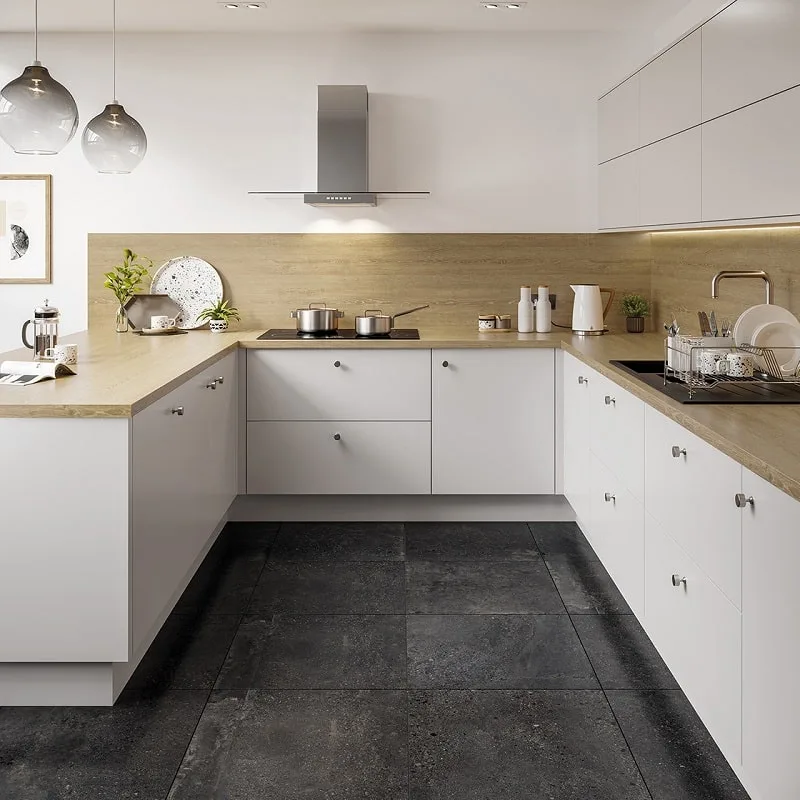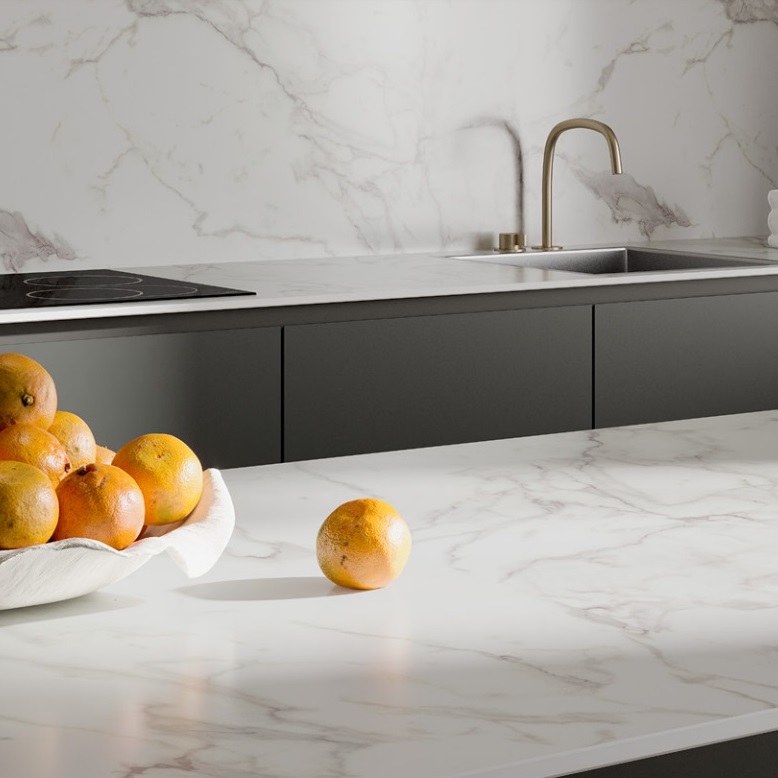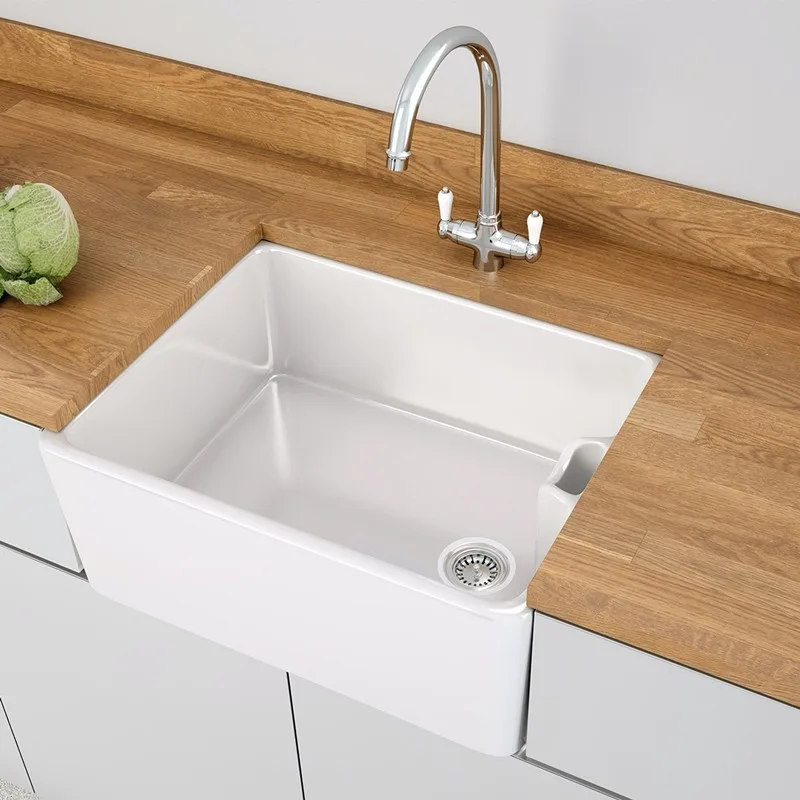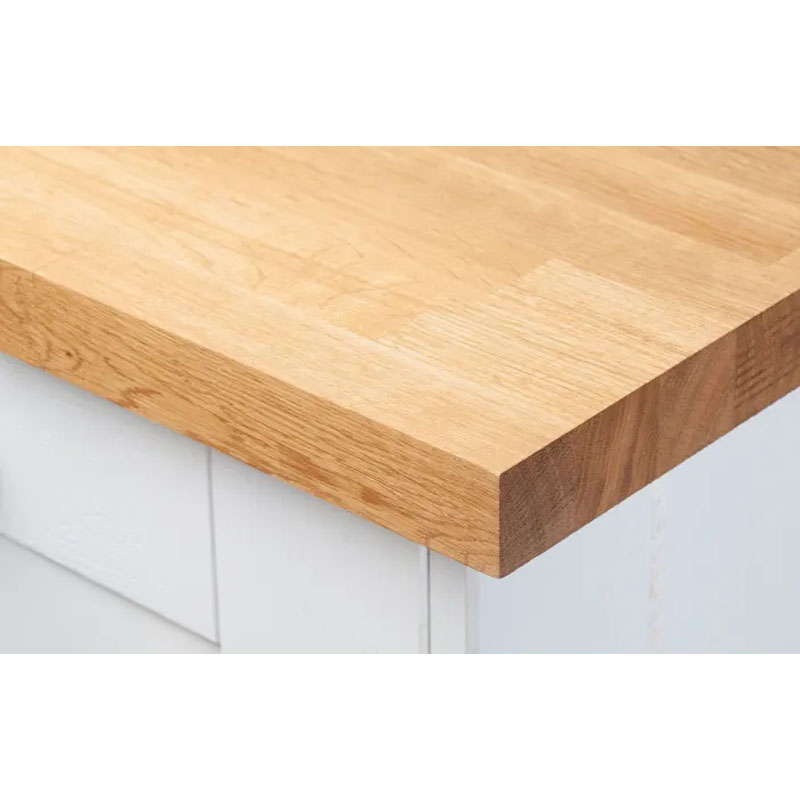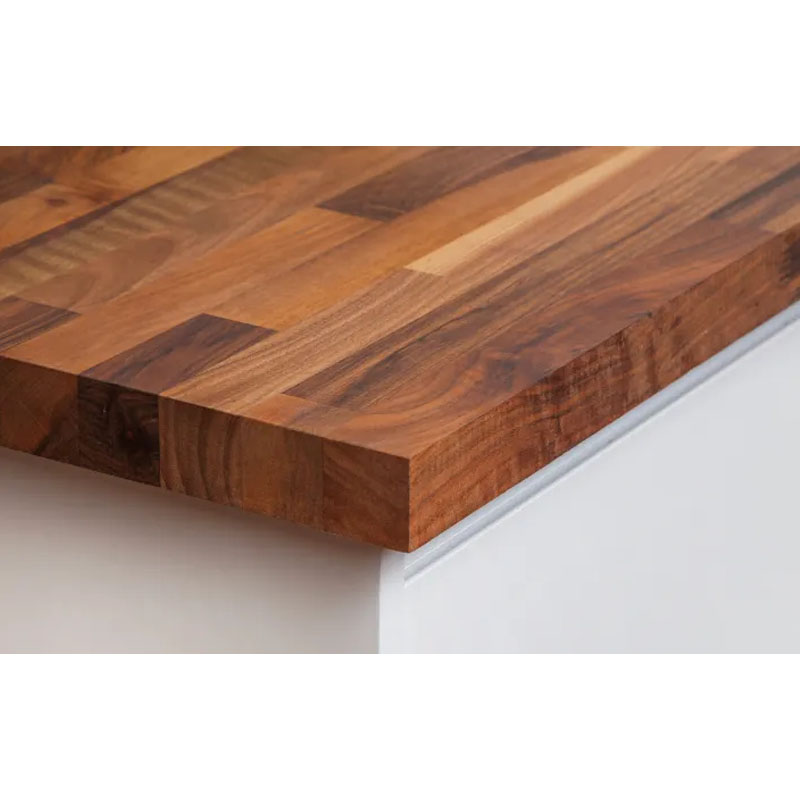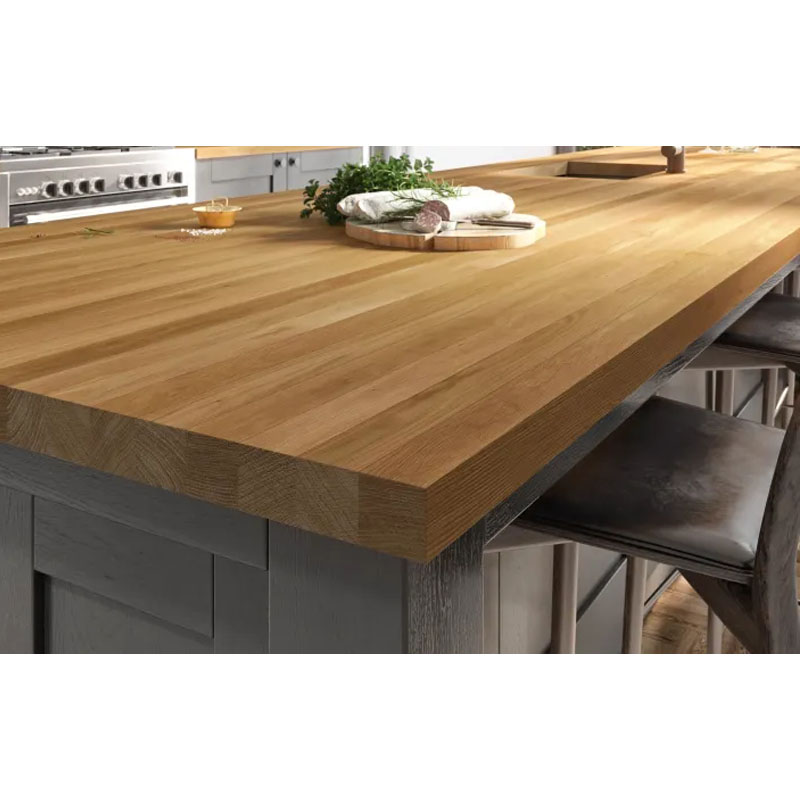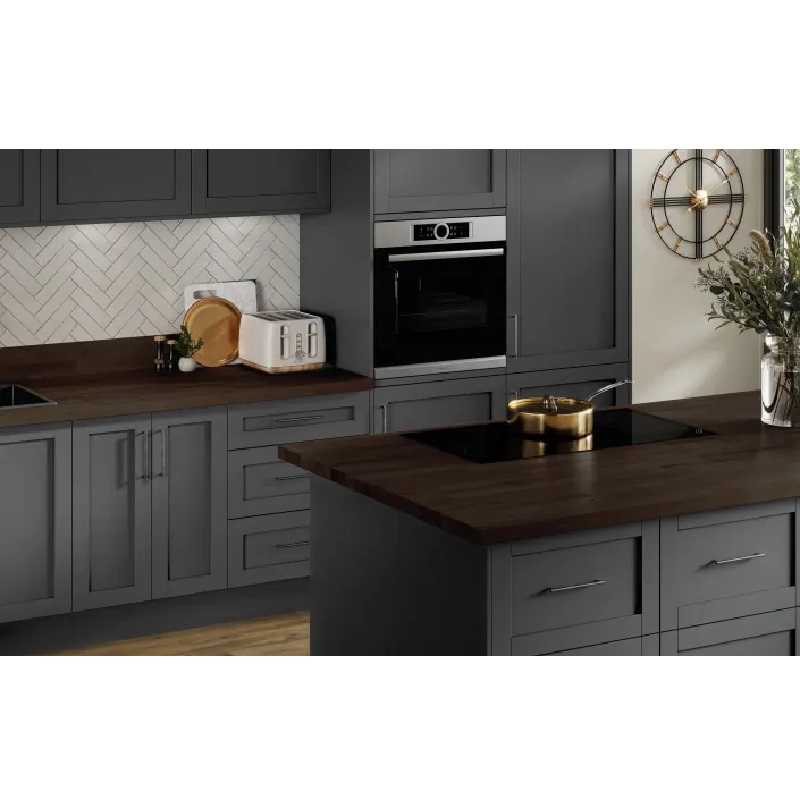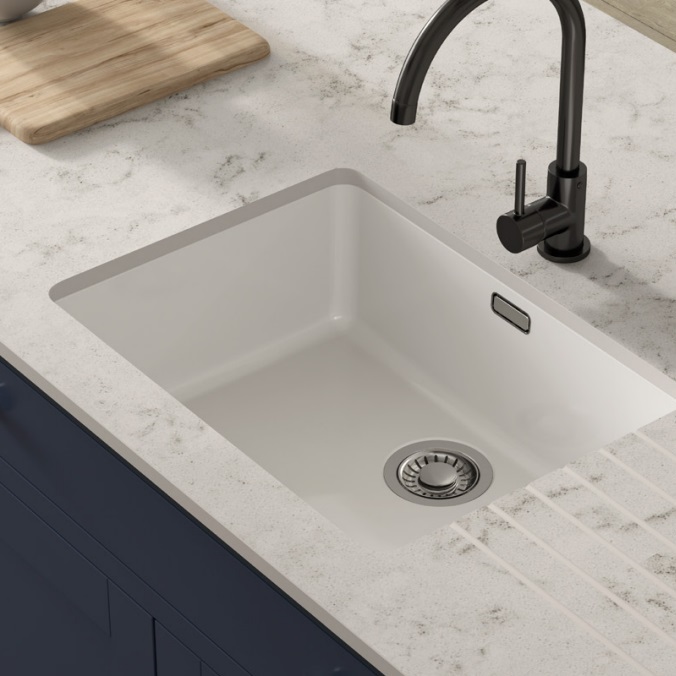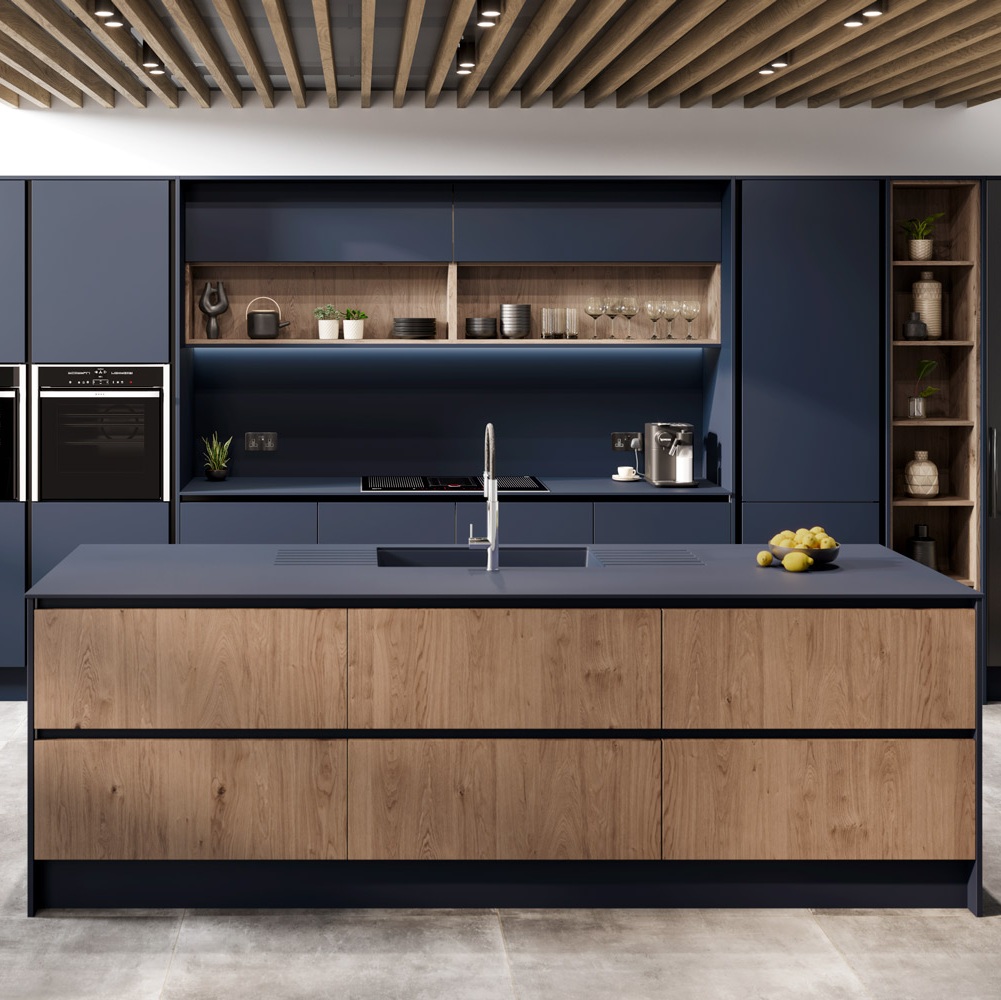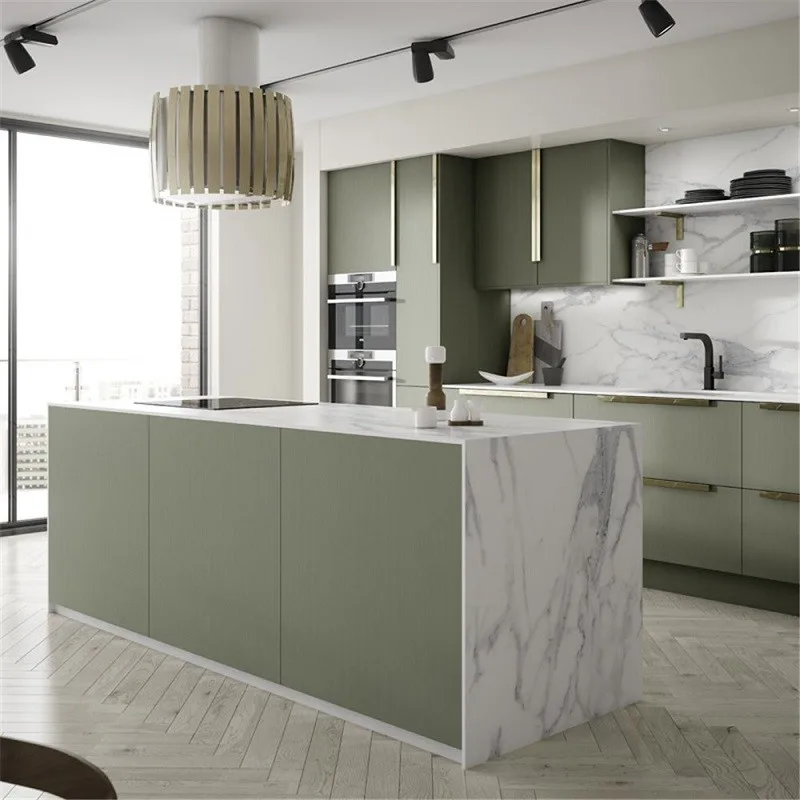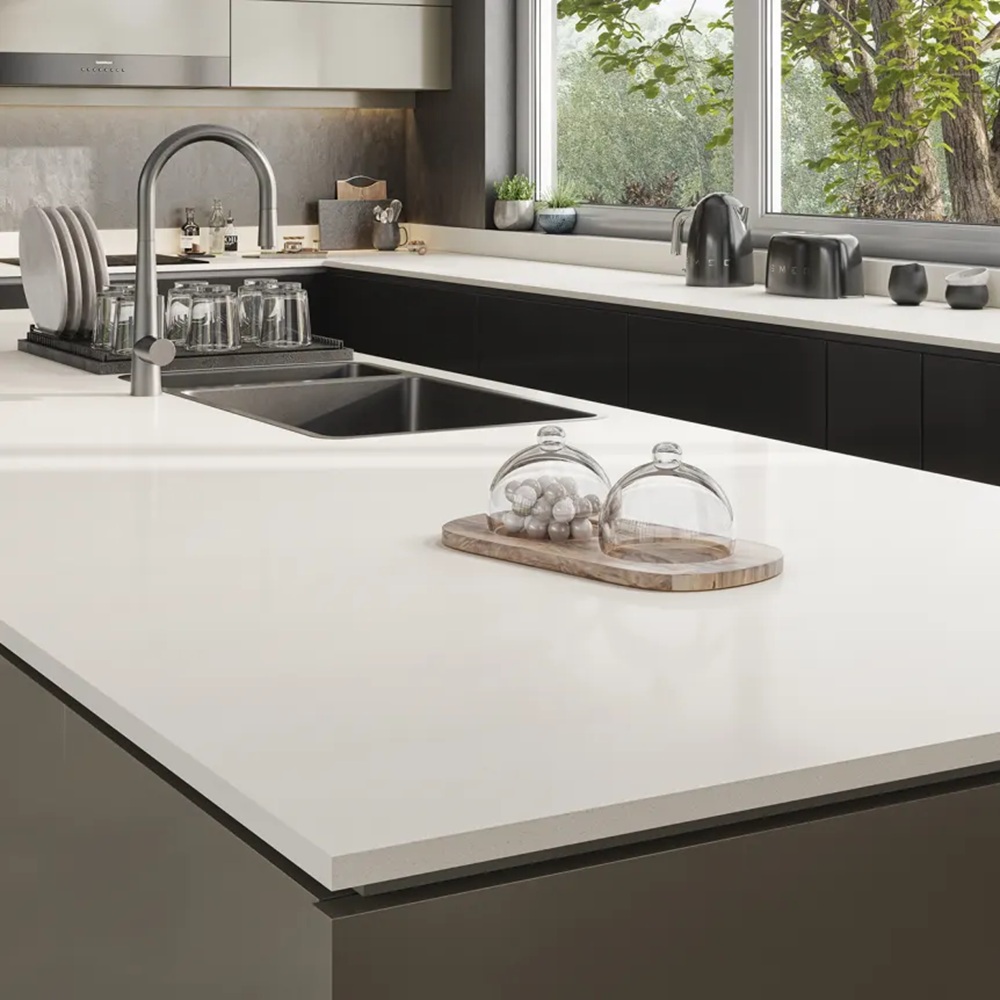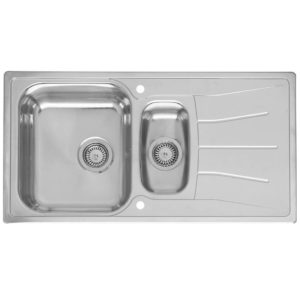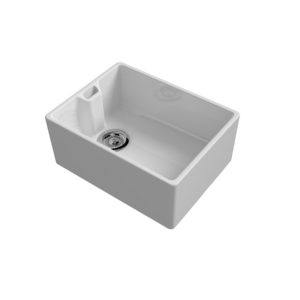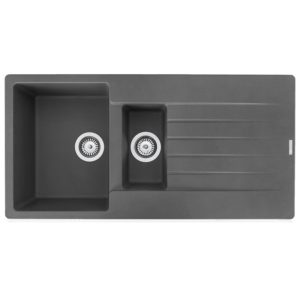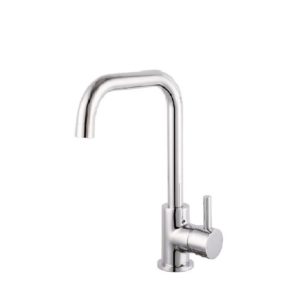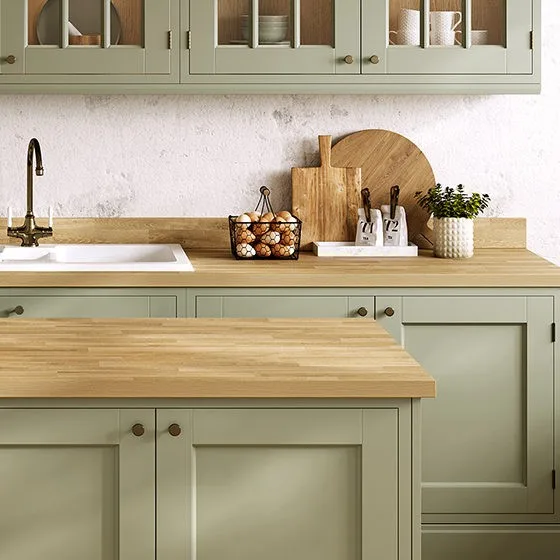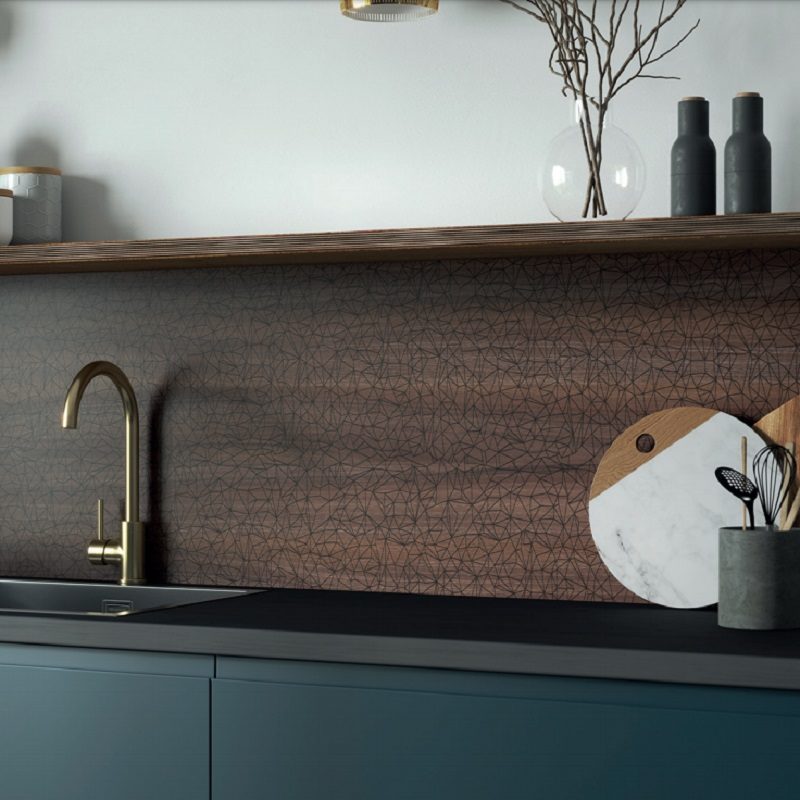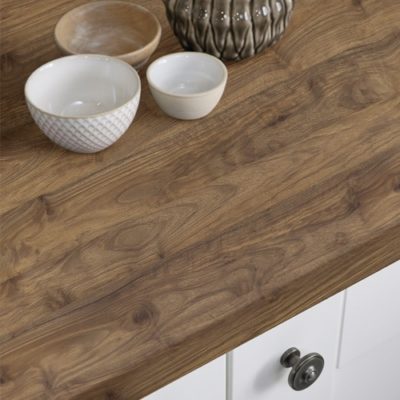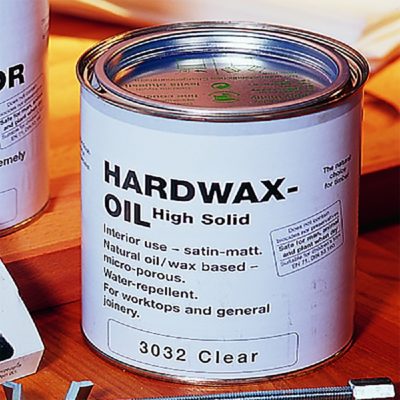Help and Advice, How To
Solid Wood Worktop Installation Guide
Solid wood worktops are a timeless choice for the classic look and functionality of your kitchen. Renowned for their durability, natural aesthetic, and the warmth they bring to the heart of your home, these worktops are a popular choice among homeowners looking to add a touch of elegance and practicality to their kitchen spaces.
In this guide, we’ll be covering everything needed to successfully install your solid wood worktop, from the initial preparation of your workspace to the final touches that will ensure your worktop not only looks fantastic but also stands the test of time.
Key Considerations When Installing Wood Worktops
Before diving into the installation process, it’s important to understand some key aspects of working with solid wood:
- Acclimatisation: It’s crucial to allow the wood to acclimatise to your home’s temperature and humidity to prevent warping or splitting.
- Tools and Materials: Ensure y have saws, routers, sanders, sealants, and appropriate fixings, which are essential for a smooth installation.
Why Choose Solid Wood Worktops?
Solid wood worktops are not only beautiful but also highly functional. They can be sanded down and refinished multiple times, which means they can look as good as new, years after installation. Wood’s natural antibacterial properties also make it a hygienic choice for a kitchen.
Considerations and Pitfalls
While solid wood worktops offer many benefits, there are a few considerations to keep in mind:
- Maintenance: Wood requires regular maintenance to maintain its beauty and durability. This includes oiling and occasionally sanding the surface to keep it smooth and water-resistant.
- Water and Heat Sensitivity: Wood can be sensitive to prolonged exposure to water and extreme heat, which can cause damage if not properly protected.
Throughout the installation, keep these points in mind.
Proper Storage and Acclimatisation of Solid Wood Worktops
When it comes to installing solid wood worktops, one of the most crucial steps begins even before the actual installation: proper storage and acclimatisation. This step can help to influence the longevity and appearance of your wood worktops significantly.
The Importance of Acclimatisation
Solid wood is a dynamic material, naturally responsive to the ambient conditions of its surroundings, particularly temperature and humidity. Acclimatising your wood worktops to the room where they will be installed is critical for several reasons:
- Preventing Warping and Splitting: Wood expands and contracts with changes in humidity and temperature. Allowing the wood to adjust to the specific conditions of your kitchen helps stabilise the material, reducing the risk of warping, bending, or splitting after installation.
- Ensuring a Better Fit: Acclimatised wood is more likely to maintain its shape and dimensions, ensuring a better fit and finish, which is essential for seamless joints and overall aesthetic appeal.
Tips for Storing Solid Wood Worktops
How you store your wood worktops prior to installation can make a significant difference in their condition by the time you’re ready to install them.
- Store Flat: Always store your wood worktops horizontally and flat. Use wooden battens or similar support at regular intervals to distribute the weight evenly and prevent any bending or bowing of the material.
- Off the Ground: Keeping the worktop off the ground not only helps avoid any potential water damage but also minimises the risk of dirt and debris accumulation that could scratch or dent the wood surface.
- Away from Direct Sunlight and Moisture: Place the worktops in a cool, dry area away from direct sunlight and sources of moisture. Sunlight can cause the colour of the wood to fade unevenly, while moisture can lead to swelling or mould growth.
- Covered, Yet Breathable: Cover the wood with a breathable material such as a cotton cloth to protect it from dust and dirt while allowing air circulation. Avoid using plastic wraps as they can trap moisture, potentially causing damage to the wood.
By adhering to these storage guidelines, you are setting the stage for a successful worktop installation. Proper preparation here helps ensure that your solid wood worktop will remain functional for years.
Preparation for Installing Solid Wood Worktops
Preparation is key to a successful installation of your solid wood worktop. This phase includes gathering all necessary tools and materials, measuring the installation space, ensuring that the supporting structures are adequate, and performing initial quality checks on the wood itself.
Tools and Materials Needed
Having the right tools and materials for installation is essential – here’s what you’ll need:
- Measuring Tape and Pencil: For accurate measurement of the space and marking cuts on the wood.
- Saws: A circular saw for straight cuts and a jigsaw for any cuts around corners or for sink cut-outs.
- Router: Useful for creating precise edges or fitting joints.
- Screws and Fixings: To secure the worktop to the base cabinets securely.
- Sealants and Adhesives: Silicone sealant for areas exposed to water, such as around the sink, and a strong adhesive for joining sections of the worktop.
- Sanding Equipment: For smoothing cut edges and preparing the surface for finishing.
- Wood Oil and Applicator: To protect and seal the wood, enhancing its natural grain and colour.
- Level and Square: To check that the cabinets are even and the worktop will sit flat.
- Clamps: For holding the worktop securely during cutting and joining.
Preliminary Steps
Before you begin the installation:
- Measure the Space: Accurately measure the area where the worktop will be installed. Consider any appliances, sinks, or other fixtures that will need to be accommodated.
ACCOMMODATE WOOD EXPANSION: Ensure the correct space is left between all worktop edges, cabinets or walls – we recommend around 4-5mm.
When fitting the worktop near a heat source such as an oven or cooker when you all a minimum of a 30mm gap around the edge and fit a solid wood worktop end cap – this will protect the worktop and prevent splitting.
Appliances: Ensure there’s enough space for the worktop when installing over the top of an appliance such as a dishwasher or washing machine. Remember, these appliances will produce heat & humidity which will affect a wooden worktop. Ensure you fit a moisture barrier to protect the underside of the worktop.
- Check Cabinet Level and Strength: Use a level to ensure that all base cabinets are even. It’s crucial that they are level to prevent issues with alignment and stability of the worktop. Also, verify that the cabinets are sturdy enough to support the weight of solid wood, which can be substantial.
- Inspect the Worktop for Imperfections: Before installation, thoroughly inspect the wood for any imperfections, signs of damage, or bowing. Addressing these issues before the worktop is installed is much easier than dealing with them post-installation.
- Oiling Test Patch: It’s advisable to oil a small, inconspicuous area of the worktop to check that the colour and finish meet your expectations.
By following these preparation steps, you can ensure that the installation process will go more smoothly, and the final result will be both beautiful and durable.
Cutting and Routing Solid Wood Worktops
Cutting Worktops to Size
When it comes to cutting your solid wood worktops, accuracy and the right technique are essential to prevent splintering:
- Measure Twice, Cut Once: the old saying rings true – begin by marking out your cutting lines clearly with a pencil. Double-check all measurements for accuracy.
- Use the Right Saw: A circular saw is ideal for making straight cuts. Ensure you use a sharp, fine-toothed blade to minimise splintering and achieve a cleaner cut.
- Support the Worktop: Ensure the worktop is fully supported and stable during cutting. Use clamps and wooden battens to secure the worktop and prevent any movement.
- Tape the Cut Line: Applying a strip of painter’s tape along the cut line can help reduce splintering as it provides a guide and reduces the tear-out effect on the wood.
- Cut Slowly and Steadily: Proceed with the cut at a steady, controlled pace. Rushing through this process can result in uneven cuts and more splintering.
Routing Edges for a Finished Look
Routing the edges of your worktop enhances its appearance but also removes sharp edges, making it safer and comfortable to use:
- Choose the Right Router tool bit: Select a router bit that suits the profile you desire for your worktop’s edges. Common profiles include rounded or bevelled.
- Secure the Worktop: As with cutting, make sure the worktop is clamped down securely to your work surface to prevent any movement during routing.
- Test on Scrap Wood: Before routing the actual worktop, test your chosen bit on a piece of scrap wood to check the profile and make any necessary adjustments to the router settings.
- Keep the Router Steady: Use a steady hand and even pressure when routing the edges. Move the router in a direction opposite to the spin of the bit (counter-clockwise), which helps in controlling the router better.
Installing Sinks and Hobs
Precision is key when it comes to integrating sinks or hobs into your solid wood worktop:
- Mark Accurately: Position the sink or hob template exactly where you want it to be installed and mark the area clearly.
- Drill Pilot Holes: Start by drilling pilot holes at the corners of your marked area to make it easier to insert the jigsaw blade.
- Use a Jigsaw for Cutouts: Using a jigsaw, cut from hole to hole along the inside edge of your marking. Ensure your cuts are straight and keep the jigsaw steady.
- Smooth the Edges: After cutting, smooth the edges with sandpaper or a small router to ensure a perfect fit and to prevent any damage when installing the sink or hob.
By following these detailed steps for cutting, routing, and installing fixtures, your solid wood worktop will not only fit perfectly but will also have a professional, polished look.
Fixing Solid Wood Worktops to Base Cabinets
Securing your solid wood worktop properly to the base cabinets is essential for safety – ensuring the worktops provides stability and durability.
Securing the Worktops
To ensure your worktop is securely attached and stays in place, follow these steps:
- Choose the Right Fixings: Use appropriate brackets and screws for fixing the worktop to the cabinets. Slotted angle brackets are often recommended as they allow for the natural expansion and contraction of wood.
- Positioning the Brackets: Install the brackets along the inside of the cabinet where they won’t be visible. Typically, brackets should be placed at the corners of each cabinet and at intervals of approximately 600mm along the cabinet run.
- Pre-drill Holes: To prevent splitting the wood, it’s important to pre-drill holes for the screws. Make sure the drill bit used is slightly smaller than the screw diameter.
- Fixing the Worktop: Secure the brackets to the worktop first, then to the cabinet. Do not overtighten the screws into the worktop; allow a little play to accommodate wood movement.
Allowing for Wood Expansion and Contraction
As we mentioned in the section about measuring you need to accommodate wood’s natural response to humidity and temperature changes. Here’s how to manage this:
- Expansion Gaps: Leave a small gap between the wall and the edge of the worktop, usually about 4-5mm, to allow for expansion. This gap can be covered with a matching Splashback or sealant later for a clean look.
- Use of Expansion Strips: For wider spans or runs of worktop, consider using expansion strips in the joints between worktop sections to absorb any movement.
- Do Not Restrict Movement: When fixing the worktops, ensure that the method used does not restrict the natural movement of the wood. The screws in the slotted brackets, for example, should not be fully tightened to allow the worktop some movement.
Joining Solid Wood Worktop Sections
Joining sections of your solid wood worktop seamlessly is crucial for both a great finish and functional integrity.
Techniques for Seamless Joining
When extending the length of your worktop or fitting corners, you can use various techniques to join the sections securely and neatly:
- T-Bolts and Connector Bolts: Often used alongside butt joints, these bolts pull the worktop sections together from underneath, ensuring a tight and secure join. Holes are drilled on the underside of the worktop edges, and the bolts are inserted through these to tighten the sections together. We have a full range of these bolts available to buy online.
- Biscuit Joints: This popular method involves creating crescent-shaped cuts in the wood edges of both worktop pieces and inserting oval-shaped ‘biscuits’ coated in adhesive. When the adhesive sets, it forms a strong, seamless bond. Biscuit joints are not only strong but also help in aligning the surface levels between two sections.
- Butt Joints: In this simpler method, the ends of two worktop sections are cut square, glued, and then fixed tightly together. Butt joints may also involve the use of joining strips or bolts underneath the worktop to reinforce the joint.
Ensuring a Level and Even Surface Across Joins
Achieving a level join is critical, not just for the worktop’s appearance but also for practical use. Here’s how to ensure your joins are even:
- Use a Level: Before fully securing the joints, place a spirit level across the join. Check from multiple angles to ensure that the entire surface is level. Adjust as necessary before the adhesive sets or the bolts are fully tightened.
- Sand Across the Join: Once the joint is secured and the adhesive has cured, sand over the join to smooth out any minor discrepancies between the sections. Begin with a coarser grit sandpaper and finish with a finer grit to achieve a smooth, flush surface.
- Seal the Join: After sanding, it is important to seal the join to prevent moisture ingress, which can cause wood swelling and joint failure. A suitable sealant or several coats of oil or lacquer over the entire worktop, focusing on the join areas, will provide protection.
Finishing Your Solid Wood Worktop
The final stage in installing solid wood worktops involves applying a finish that will protect the wood and enhance its natural beauty. There are several finishing options available, each offering different benefits.
Options for Finishing Wood Worktops
- Oiling: Oil is one of the most popular finishes for wood worktops because it penetrates deep into the wood, enhancing its natural grain and providing a warm, rich finish. Oiled surfaces are easy to maintain and can be re-oiled as needed to refresh the worktop. Common choices include linseed oil and tung oil.
- Sealing: Sealants such as polyurethane provide a more durable finish than oil. They form a hard, protective layer on the surface that is highly resistant to water, stains, and scratches. This makes them ideal for high-use areas but can make the wood look more synthetic.
- Varnishing: Varnishing also offers a durable finish and comes in various sheens from matte to glossy. Varnishes are generally more resistant to heat and moisture than oils, making them suitable for kitchen environments.
Step-by-Step Instructions for Applying Finish
For Oiling:
- Preparation: Sand the surface lightly with fine-grit sandpaper to ensure an even application. Ensure the worktop is clean, dry, and free of any dust or debris.
- Application: Apply the oil evenly using a clean, lint-free cloth or a brush. Work in the direction of the grain, and make sure the entire surface is covered.
- Absorption: Allow the oil to absorb into the wood for 20-30 minutes, then wipe off any excess oil with a clean cloth. Uneven absorption can lead to dark spots, so ensure the oil is uniformly absorbed.
- Curing: Leave the worktop to cure for at least 24 hours before use. Depending on the oil used, it may take several days to fully cure.
For Sealing or Varnishing:
- Preparation: Clean the worktop thoroughly and sand it to smooth out the surface. Wipe away all sanding dust with a cloth.
- Application: Apply the sealant or varnish with a fine-bristle brush or a foam applicator, working along the grain. Apply a thin, even coat to prevent drips or bubbles.
- Drying: Allow the first coat to dry as per the manufacturer’s instructions, usually a few hours.
- Sanding: Once dry, lightly sand the surface with very fine-grit sandpaper to ensure the next coat adheres well. Wipe away all dust.
- Additional Coats: Apply at least two more coats, sanding between each coat and wiping clean. This builds up a durable protective layer.
- Curing: Allow the final coat to cure fully, which can take up to a few days, before using the worktop.
Regular maintenance, including reapplication of oil or touch-up of sealant, will keep your worktop looking great for years to come.
Aftercare for Solid Wood Worktops
Maintaining your solid wood worktop is essential to preserve its beauty and functionality over time. Regular maintenance, proper cleaning, and dealing with wear and tear appropriately can significantly extend the life of your worktop.
Regular Maintenance
Daily Cleaning: Clean the worktop daily with a soft cloth and a mild detergent. Avoid using harsh chemicals or abrasive cleaners, which can damage the finish and the wood. Always wipe up spills immediately to prevent staining and water damage.
Reapplying Finish: Depending on the type of finish you have chosen, regular reapplication may be necessary. For oiled worktops, re-oiling every six months is advisable, or more frequently if the worktop appears dry or loses its sheen. Sealed or varnished worktops typically require less frequent touch-ups, usually only when the surface starts to show wear.
Dealing with Scratches, Stains, and Water Damage
Scratches: Minor scratches can often be buffed out with fine sandpaper. After sanding, reapply oil or varnish to the sanded area to match the rest of the worktop. For deeper scratches, a wood filler that matches the worktop’s colour can be used before sanding and re-finishing.
Stains: For stains, it’s important to act quickly. Most light stains can be removed by gently rubbing with a cloth dampened with a mild detergent. For tougher stains, a solution of baking soda and water can be applied and left for a few minutes before wiping away. Always test any cleaning solution on an inconspicuous area first.
Water Damage: Water rings or minor water damage can sometimes be treated with fine sandpaper followed by re-oiling or re-varnishing. More severe water damage, like warping or splitting, might require more extensive repairs or even replacement of the affected section.
Long-Term Care
Use Protective Mats: When placing hot pans, or any potentially staining items like wine bottles or fruit bowls, always use protective mats or trivets to prevent direct contact with the wood.
Avoid Standing Water: Keep the worktop dry where possible. Avoid leaving damp cloths or sponges on the surface, and always wipe down after cleaning.
Get in Touch
Need some guidance on installation, or advice on how to maintain your worktop? Get in touch with us today. If you’re not sure which worktop would suit your space best, browse our range of worktops, available in a huge range of finishes and styles.

